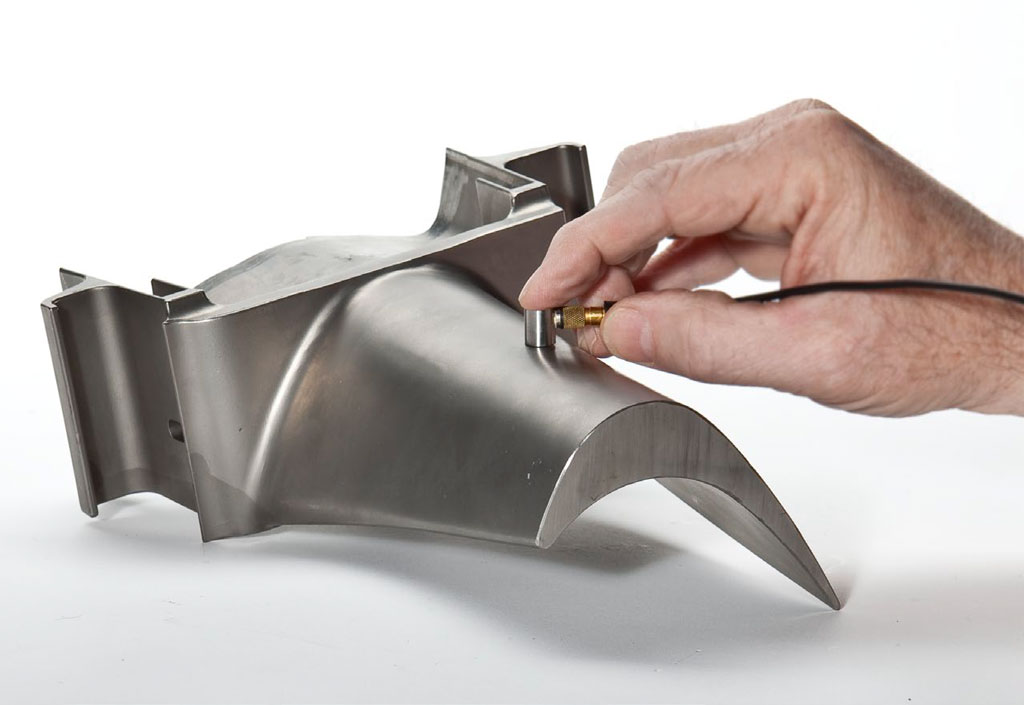
This general category of cast metals includes many applications suitable for ultrasonic thickness gauging. Cast metal parts come in a wide range of geometries and compositions.
Because most castings scatter ultrasound rapidly, the maximum thickness that can be measured is often limited. In general, 4 in. (100 mm) is about the upper limit, although in some cases it is possible to measure up to 10 in. (250 mm). Poor surface conditions, large grain size, and sound velocity variations usually account for calibrated accuracies of ±0.002 to ±0.005 in. (±0.05 to ±0.125 mm). Thin aluminum castings can be measured with a calibrated accuracy of ±0.001 in. (±0.02 mm).
Ultrasonic Testing Equipment Used for Cast Metals
Three precision gauge models are commonly recommended for thickness measurements of cast metal: the 38DL PLUS™ gauge with High Penetration software, the 45MG gauge with Single Element High Penetration software, and the 72DL PLUS™ gauge. Transducer selection and gauge setup depend on the material and thickness range being tested. Common choices include the M1036 (2.25 MHz) and M109/M110 (5 MHz) transducers. Lower frequency transducers such as the 0.5 MHz M101 are recommended for very thick or coarse-grained castings.
For the detection of subsurface porosity, cracks, or inclusions in cast metals, we also offer a complete line of digital ultrasonic flaw detectors.
To learn more about cast metal inspections, see our application note on Ultrasonic Testing in the Foundry Industry.




